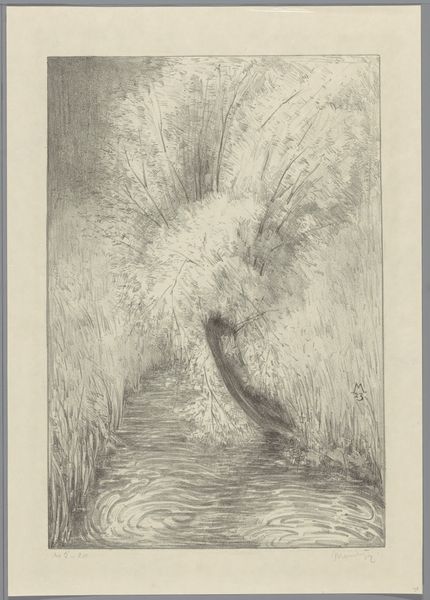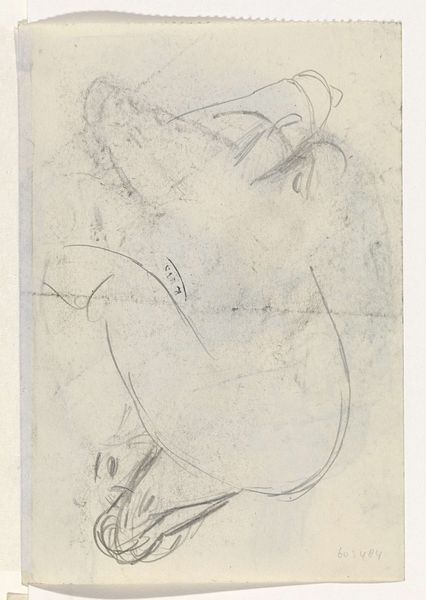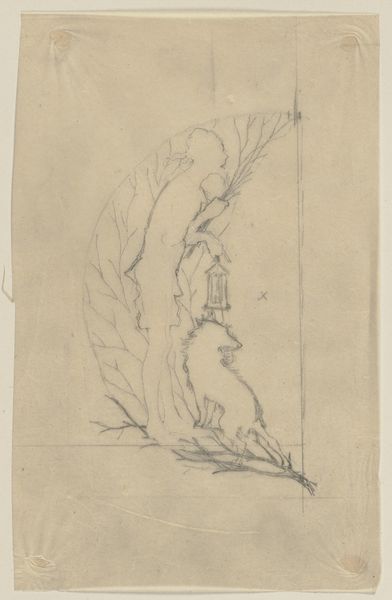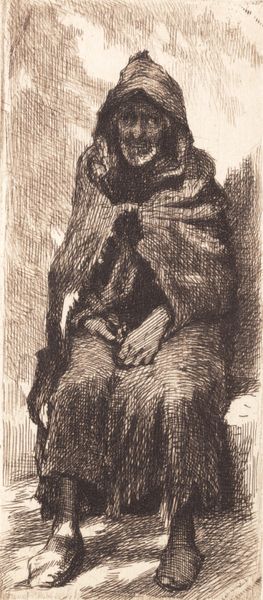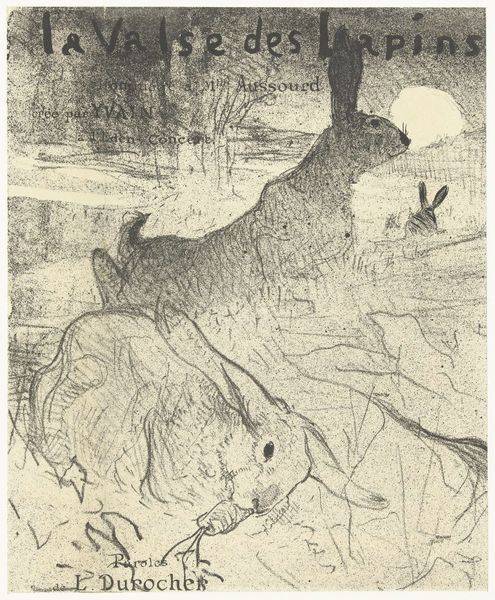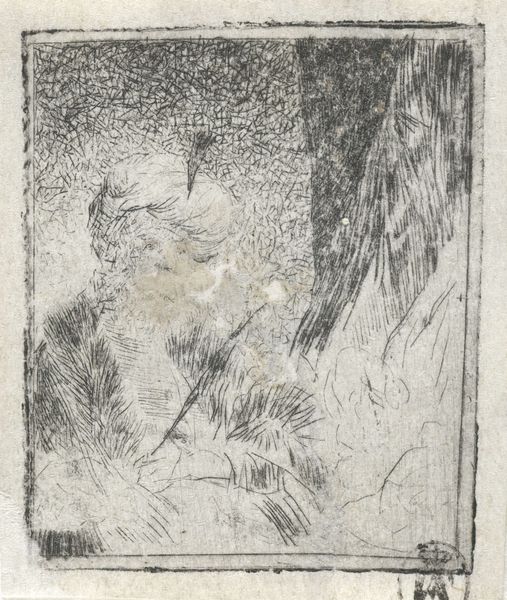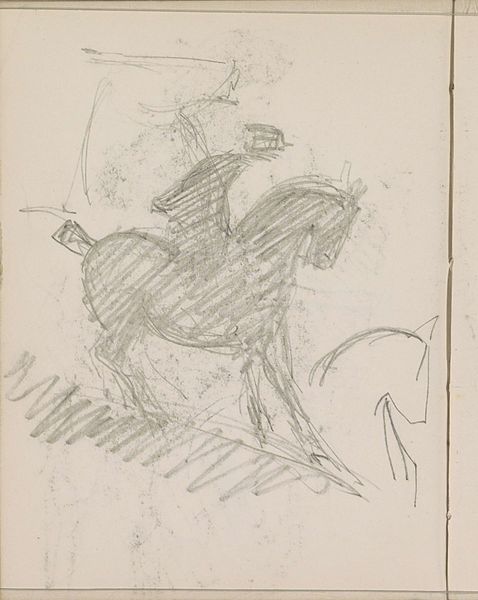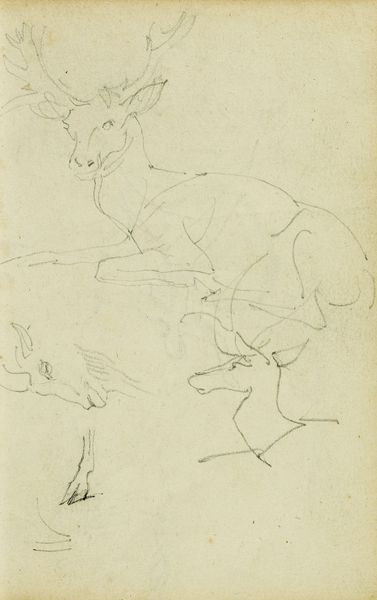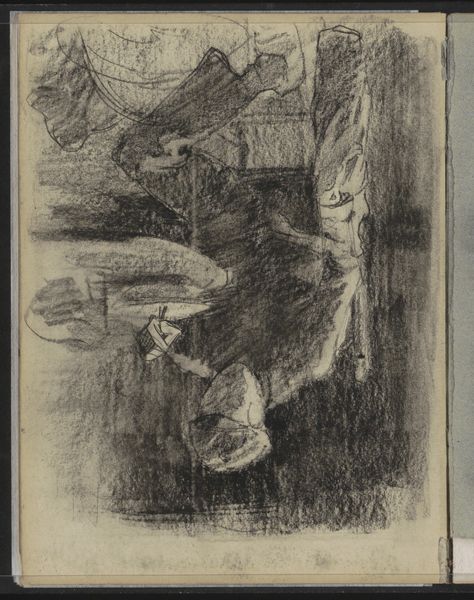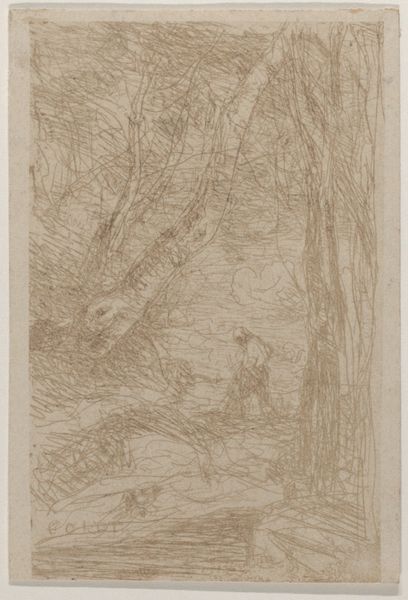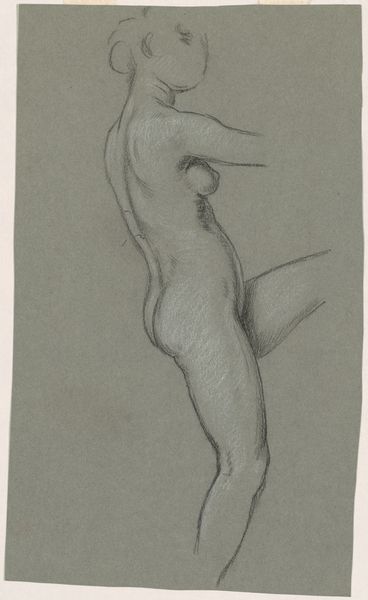
Copyright: Public Domain
Editor: Here we have Otto Scholderer's "Toter Schwan vor Trauerweide," or "Dead Swan before Weeping Willow," created in 1889. It's a drawing rendered in chalk, pastel and pencil on paper. It definitely evokes a feeling of melancholic stillness...What do you see in this piece? Curator: The swan, especially in Romanticism, serves as a poignant symbol. Consider the broader socio-political landscape of 1889. This wasn't merely an aesthetic choice; it reflects anxieties concerning mortality, the fragility of beauty in a rapidly industrializing world, and the loss of innocence. How might Scholderer be engaging with the concept of "swan song," connecting the image to notions of a fading aristocracy or the silenced voice of the marginalized? Editor: That's interesting, I hadn’t thought of it in terms of a social commentary, but rather just a nature scene and the romantic obsession with death. So, you're saying the swan isn’t just a beautiful, tragic figure, but a representation of larger societal issues? Curator: Precisely. The placement of the dead swan beneath the weeping willow, a traditional symbol of mourning, amplifies the narrative. We must ask, who is doing the mourning, and what is being mourned? Is Scholderer commenting on the exploitation of nature? Does the "dead swan" embody repressed female voices of the period? We must unpack this interplay to appreciate the work's depth fully. Editor: I see what you mean. So, even what might seem like a straightforward image has layers of meaning tied to its time. Thanks for opening my eyes to this! Curator: Absolutely! Engaging with art as a reflection of its socio-political milieu allows us to decode the encoded messages. Art is not created in a vacuum, it exists within the societal framework. This understanding is key in interpreting artworks and their relevance today.
Comments
No comments
Be the first to comment and join the conversation on the ultimate creative platform.
